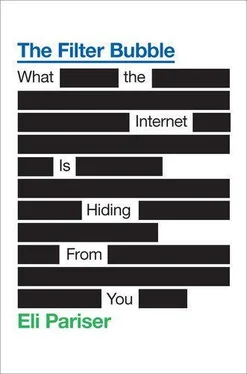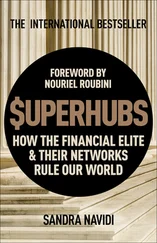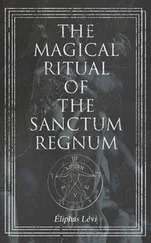At the restaurant, the officer, whose name was Yuri Nosenko, explained that he’d gotten into a bit of a scrape. On his first night in Geneva, Nosenko had drunk too much and brought a prostitute back to his hotel room. When he awoke, to his horror, he found that his emergency stash of $900 in Swiss francs was missing—no small sum in 1963. “I’ve got to make it up,” Nosenko told him. “I can give you some information that will be very interesting to the CIA, and all I want is my money.” They set up a second meeting, to which Nosenko arrived in an obviously inebriated state. “I was snookered,” Nosenko admitted later—“very drunk.”
In exchange for the money, Nosenko promised to spy for the CIA in Moscow, and in January 1964 he met directly with CIA handlers to discuss his findings. This time, Nosenko had big news: He claimed to have handled the KGB file of Lee Harvey Oswald and said it contained nothing suggesting the Soviet Union had foreknowledge of Kennedy’s assassination, potentially ruling out Soviet involvement in the event. He was willing to share more of the file’s details with the CIA if he would be allowed to defect and resettle in the United States.
Nosenko’s offer was quickly transmitted to CIA headquarters in Langley, Virginia. It seemed like a potentially enormous break: Only months after Kennedy had been shot, determining who was behind his assassination was one of the agency’s top priorities. But how could they know if Nosenko was telling the truth? James Jesus Angleton, one of the lead agents on Nosenko’s case, was skeptical. Nosenko could be a trap—even part of a “master plot” to draw the CIA off the trail. After much discussion, the agents agreed to let Nosenko defect: If he was lying, it would indicate that the Soviet Union did know something about Oswald, and if he was telling the truth, he would be useful for counterintelligence.
As it turned out, they were wrong about both. Nosenko traveled to the United States in 1964, and the CIA collected a massive, detailed dossier on their latest catch. But almost as soon as he started the debriefing process, inconsistencies began to emerge. Nosenko claimed he’d graduated from his officer training program in 1949, but the CIA’s documents indicated otherwise. He claimed to have no access to documents that KGB officers of his station ought to have had. And why was this man with a wife and child at home in Russia defecting without them?
Angleton became more and more suspicious, especially after his drinking buddy Kim Philby was revealed to be a Soviet spy. Clearly, Nosenko was a decoy sent to dispute and undermine the intelligence the agency was getting from another Soviet defector. The debriefings became more intense. In 1964, Nosenko was thrown into solitary confinement, where he was subjected for several years to harsh interrogation intended to break him and force him to confess. In one week, he was subjected to polygraph tests for twenty-eight and a half hours. Still, no break was forthcoming.
Not everyone at the CIA thought Nosenko was a plant. And as more details from his biography became clear, it came to seem more and more likely that the man they had imprisoned was no spymaster. Nosenko’s father was the minister of shipbuilding and a member of the Communist Party Central Committee who had buildings named after him. When young Yuri had been caught stealing at the Naval Preparatory School and was beaten up by his classmates, his mother had complained directly to Stalin; some of his classmates were sent to the Russian front as punishment. It was looking more and more as though Yuri was just “the spoiled-brat son of a top leader” and a bit of a mess. The reason for the discrepancy in graduation dates became clear: Nosenko had been held back a year in school for flunking his exam in Marxism-Leninism, and he was ashamed of it.
By 1968, the balance of senior CIA agents came to believe that the agency was torturing an innocent man. They gave him $80,000, and set him up in a new identity somewhere in the American South. But the emotional debate over his veracity continued to haunt the CIA for decades, with “master plan” theorists sparring with those who believed he was telling the truth. In the end, six separate investigations were made into Nosenko’s case. When he passed away in 2008, the news of his death was relayed to the New York Times by a “senior intelligence official” who refused to be identified.
One of the officials most affected by the internal debate was an intelligence analyst by the name of Richards Heuer. Heuer had been recruited to the CIA during the Korean War, but he had always been interested in philosophy, and especially the branch known as epistemology—the study of knowledge. Although Heuer wasn’t directly involved in the Nosenko case, he was required to be briefed on it for other work he was doing, and he’d initially fallen for the “master plot” hypothesis. Years later, Heuer set out to analyze the analysts—to figure out where the flaws were in the logic that had led to Nosenko’s lost years in a CIA prison. The result is a slim volume called The Psychology of Intelligence Analysis, whose preface is full of laudatory comments by Heuer’s colleagues and bosses. The book is a kind of Psychology and Epistemology 101 for would-be spooks.
For Heuer, the core lesson of the Nosenko debacle was clear: “Intelligence analysts should be self-conscious about their reasoning processes. They should think about how they make judgments and reach conclusions, not just about the judgments and conclusions themselves.”
Despite evidence to the contrary, Heuer wrote, we have a tendency to believe that the world is as it appears to be. Children eventually learn that a snack removed from view doesn’t disappear from the universe, but even as we mature we still tend to conflate seeing with believing. Philosophers call this view naïve realism, and it is as seductive as it is dangerous. We tend to believe we have full command of the facts and that the patterns we see in them are facts as well. (Angleton, the “master theory” proponent, was sure that Nosenko’s pattern of factual errors indicated that he was hiding something and was breaking under pressure.)
So what’s an intelligence analyst—or anyone who wants to get a good picture of the world, for that matter—to do? First, Heuer suggests, we have to realize that our idea of what’s real often comes to us secondhand and in a distorted form—edited, manipulated, and filtered through media, other human beings, and the many distorting elements of the human mind.
Nosenko’s case was riddled with these distorting factors, and the unreliability of the primary source was only the most obvious one. As voluminous as the set of data that the CIA had compiled on Nosenko was, it was incomplete in certain important ways: The agency knew a lot about his rank and status but had learned very little about his personal background and internal life. This led to a basic unquestioned assumption: “The KGB would never let a screw-up serve at this high level; therefore, he must be deceiving us.”
“To achieve the clearest possible image” of the world, Heuer writes, “analysts need more than information…. They also need to understand the lenses through which this information passes.” Some of these distorting lenses are outside of our heads. Like a biased sample in an experiment, a lopsided selection of data can create the wrong impression: For a number of structural and historical reasons, the CIA record on Nosenko was woefully inadequate when it came to the man’s personal history. And some of them are cognitive processes: We tend to convert “lots of pages of data” into “likely to be true,” for example. When several of them are at work at the same time, it becomes quite difficult to see what’s actually going on—a funhouse mirror reflecting a funhouse mirror reflecting reality.
Читать дальше











